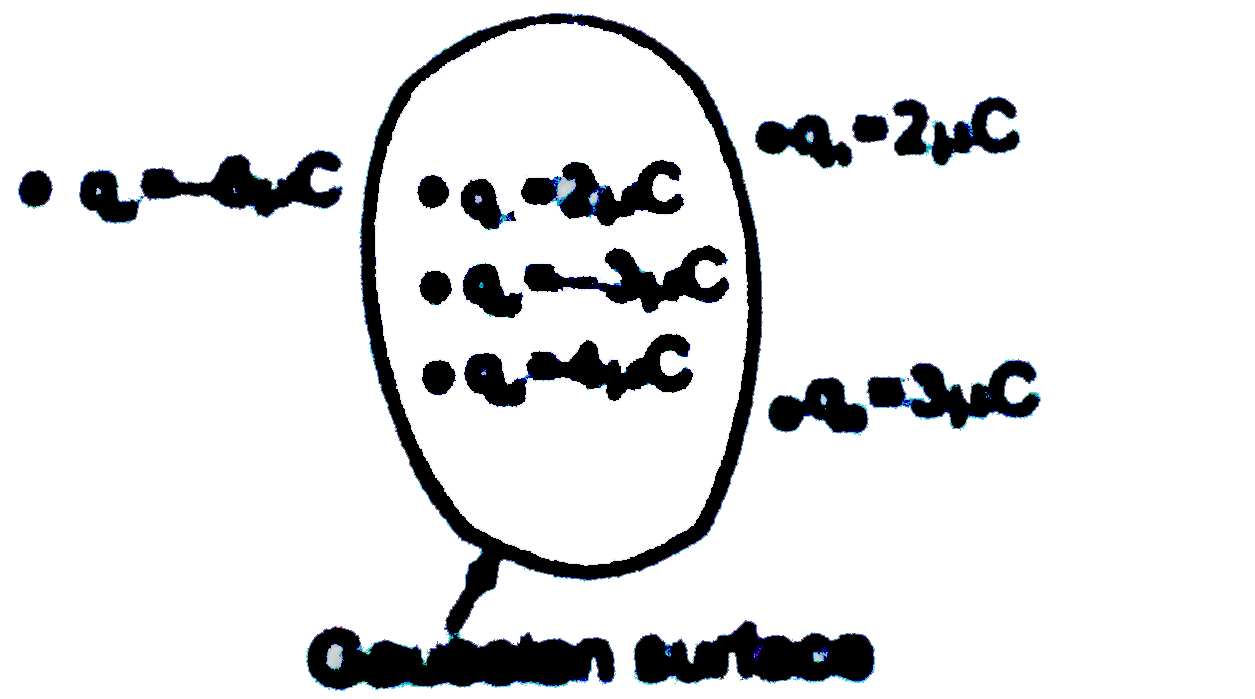An infinite, uniformly charged sheet with surface charge density σ cuts through a spherical Gaussian surface of radius R at a distance X from its center, as shown in the figure. The electric flux Φ through the Gaussian surface is .

πR2σε0
2π(R2−x2)σε0
x(R−x)2σε0
x(R2−x2)σε0
The correct Answer is:D

Area of sheet Gaussian surface =π(R2−x2
Charge =σπ(R2−x2), Flux =q∈e0=σπ(R2−x2)e0
Similar Questions
Knowledge Check
The electric flux through a closed Gaussian surface depends upon
Anet charge enclosed and permittivity of the medium.Bnet charge enclosed, permittivity of the medium and the size of the Gaussian surface.Cet charge enclosed only.Dpermittivity of the medium only.Which of the following is true for electric-flux through a Gaussian surface ?
AIt depends on magnitude of charge enclosed by Gaussian surfaceBElectric flux is scalar quantityCElectric flux is independent of shape of Gaussian surface enclosing the chargeDAll are trueA charge Q is enclosed by a Gaussian spherical surface of radius R, If the radius is doubled, then the outward electric flux will
Abe reduced to halfBremains the sameCbe doubledDincreases four times
Which of the following is true for electric flux through a Gaussian surface ?
View SolutionA charge Q is enclosed by a spherical Gaussian surface of radius R. If the radius of the sphere is double, how will the outward electric flux charge ? If a charge −Q is brought outside the Gaussian surface, will the electric flux reduce to zero ?
View SolutionIf the radius of the Gaussion surface enclosing a charge q is halved, how does the electric flux through the Gaussion surface change?
View SolutionA charge q is placed at the centre of a hollow sphere of radius r, Total electric flux passing through the spherical surface is __________
View SolutionA charge Q is enclosed by a Gaussian spherical surface of radius R. If the radius is doubled, then the outward electric flux will
View Solution


